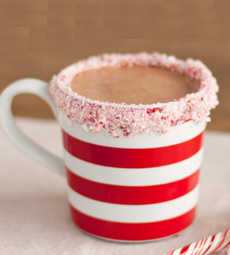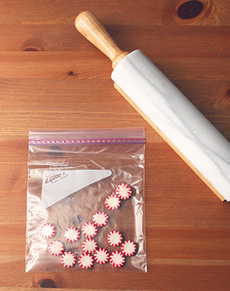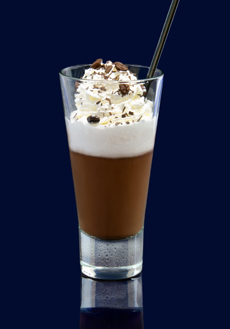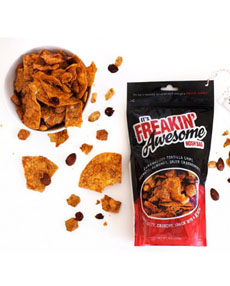|
December 20th is National Sangria Day. The word derives from the Spanish word for bloodletting, and refers to the red wine that was used as a base for the punch.
While many of us think of sangria as a summer cooler, red sangria is the perfect color to celebrate the holidays.
THE HISTORY OF SANGRIA
Sangria’s ancestors are a Roman drink called “hippocras” (wine, sugar, spices and other ingredients).
Around 200 B.C.E., the conquering Romans arrived in Spain and planted vineyards.
They soon discovered that red grape varietals produced the best wine in the local soils.
The locals created fruit punches from the wines, and called these drinks sangria after the color.
While sangria was drunk in Spain for more than 1,000 years, it didn’t arrive in the U.S. until the 1964 World’s Fair in New York City.
It was served at the Spanish Pavilion, and quickly made its way into American homes and restaurants.
Sangria is available in bottles, ready to drink. Since January 2014, the use of the word “sangria” on bottle labels is restricted by the European Union. Only sangria made in Spain and Portugal can be sold under that name.
Here’s more about sangria
HOW TO MAKE SANGRIA
Sangria is made with wine, a spirit or liqueur, club soda, ginger ale, or another sparkling element (including sparkling wine), fruit, and sometimes, a sweetener.
In Spain, sangria is typically made with Rioja or another local red wine.
There are white wine versions, called sangria blanco (white sangria) and sparkling versions using cava, Spain’s sparkling white wine.
In countries where rosé is popular, it, too, is used as a base for sangria; is saké, Japan’s rice wine.
The wine is typically blended in a pitcher or a punch bowl with chopped fruit, fruit juices, or a sweetener (honey, sugar, syrup, lemon-lime soda instead of the club soda), soda water, and sometimes brandy.
While some people feel that the cheapest wine will suffice because the flavor gets blended with these other ingredients, we recommend using a good (not great) quality wine. Let “quality” refer to anything you’d be happy to drink straight from the glass.
Ideally, the sangria—without the soda water—should be allowed to chill overnight for the flavors to meld. The chilled soda water or other sparkling beverage should be added right before serving.
To serve, pour the sangria into a pitcher filled with ice cubes and garnish with more fresh fruit.
Traditional sangria pitchers have a pinched lip so that the fruit and other solids do not splash into the glass.
But if you’re going to purchase a pitcher, we particularly like a pitcher with a central well to hold the ice. This keeps the drink cold without diluting it.
SANGRIA TRIVIA
Since January 2014, the use of the word “sangria” on bottle labels is restricted by the European Union. Only sangria made in Spain and Portugal can be sold under that name.
Based on its ingredients, sangria is both a cocktail and a punch.
Sangaree, a fruit and wine punch from the West Indies, is the same drink. The name is an archaic English term for sangria.
15 SANGRIA RECIPES
Apple Sangria
Cranberry Sangria Recipe
Halloween Sangria
Jubilee Sangria
Peach Sangria #1
Peach Sangria #2
Pomegranate Sangria Recipe
Rainbow Sangria
Red, White & Blue Sangria
Rosé Sangria
Ruby Port Sangria
Saké Sangria
Stone Fruit Sangria
Summer Sangria (White Sangria)
Winter Sangria
|
|

[1] This version adds Port to the red wine (photo © Sandemans).

[2] You can also make sangria with red or white wine (photo © La Marina | NYC [now closed]).

[3] While traditionally made with red wine, white wine sangrias are also popular. You can make them with sparkling wine, too (photo © U.S. Apple Association).
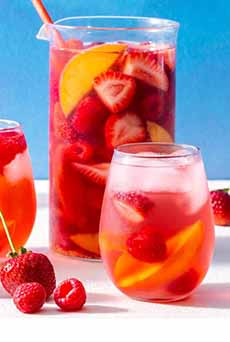
[4] Rosé Sangria With Peaches (photo © Sun Basket).

[5] Unless you’re expecting a punchbowl-size crowd, it’s easier to make sangria in a pitcher (photo © Anna Tukhfatullina | Pexels).
|
